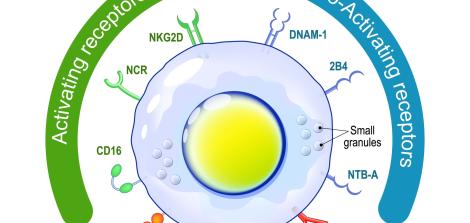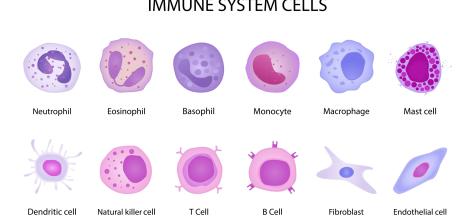Using Machine Learning to Automatically Identify Important Conversation Topics During Therapy Sessions

Traditional psychotherapy research methods have been based primarily on qualitative research, focusing on clients' own testimonies. This method has significant disadvantages: client difficulty in objectively evaluating their own mental condition, client reluctance to complete questionnaires, and the limitations of questionnaires themselves. Therefore, scientist prefer a more quantitative approach. However, in the field of psychotherapy, gathering sufficient data from conversations between the therapist and the client requires manually encoding or processing of hours of interactions in order to turn them into a format suitable for quantitative research.
A groundbreaking study led by Prof. Dana Atzil-Slonim at the psychotherapy laboratory at Bar-Ilan University shows how advanced machine learning technologies can be utilized to automatically analyze therapeutic text and shed light on important nuanced variables of which we have previously been unaware.
Study objective: examining which conversation topics predict successful treatment outcomes and gains
The researchers used Topic Modeling, a computerized method that automatically derives topics from texts, in order to identify relevant conversation topics during psychotherapy sessions and examine which topics could predict two of the most studied variables in the field of psychotherapy:
1. Clients' functioning levels
Functioning levels are a measure of a person's ability to perform in various domains such as interpersonal relationships and social role performance. Clients’ functioning levels are an important tool to evaluate psychotherapy outcomes and provide feedback to therapists. Functioning levels are usually determined based on questionnaires that clients fill-out before and after the therapy session.
2. Ruptures in the therapeutic alliance
Many psychotherapy studies show that the quality of the therapeutic relationship between the client and the therapist is one of the main variables that can predict treatment success. This relationship, known as the "therapeutic alliance", includes constant transitions between "ruptures", tensions, and disagreements, and the resolution of those ruptures and tensions which lead to greater understanding and synchronization between the client and the therapist.
The Research Hypothesis
This study examined which of the conversation topics that came up during therapy sessions could be used to best identify client functioning levels and therapeutic alliance ruptures during sessions, as well as whether there is a relationship between changes in conversation topics and treatment outcomes.
The researchers based their work on two research hypotheses: One, that identification of conversation topics can be used to measure client functioning levels as well as therapeutic alliance ruptures, and the other – that changes in conversation topics throughout the treatment would be related to treatment outcomes and as a result, different patterns of conversation topics would emerge during successful treatments versus unsuccessful treatments.
Data collection: the research laboratory at the community clinic
The current study was based on the recordings of 873 weekly clinic therapy sessions with 58 clients and 52 therapists. The recordings were transcribed manually and amounted to more than 5 million words, which had to be encoded, processed, and analyzed.
The participants were all over the age of 18, and the majority were women (58.9%). The clinical diagnoses were based on an Axis I DSM–IV neuropsychiatric diagnostic interview.
In addition to the content of the therapy sessions, researchers used several tools to track client progress and therapist feedback:
1. Outcome Rating Scale (ORS) is a tool for clients to self-rate their functioning levels across four domains – personal, family, social, and general. Treatment success, as defined in this study and in other studies, is an increase of 5 points or more on the client's self-reported ORS scale.
2. Post Session Questionnaires (PSQ) for therapists – treatment alliance ruptures were identified after each session by having therapists give feedback (PSQ questionnaire). This questionnaire is a commonly used tool in psychotherapy studies and has been shown to be capable of predicting various situations and processes.
3. Hopkins Abbreviated Symptom Checklist – the researchers examined the severity of clients' mental symptoms using an 11-item weekly questionnaire.
Data processing: identification, definition, and categorization
Data processing required the integration of research strategies and artificial intelligence, to allow the generation of lists of identifiable conversation topics out of the raw material.
To automatically identify conversation topics, the millions of words in the raw material needed to be divided into semantically meaningful categories. This was done with the aid of artificial intelligence tools that automatically derive categories from the text. One of the significant advantages of this strategy is its ability to reduce textual data into a tabulated list of topics, link therapy sessions to specific topics, and provide a dynamic picture of how these topics change from session to session throughout a course of therapy.
In order to make the data meaningful, a preliminary process was required. This involved omitting both words that are semantically meaningless as well as rare and non-informative words. Since any analysis based on a high rate of rare or special words can interfere with the organization of topics and lead to results that are difficult to interpret semantically, the researchers omitted words that appeared less than 10 times across the database. In addition, common words that were found in more than 90% of the documents were omitted because they were expected to reduce the linguistic distinction of the identified topics.
The researchers used topic modeling to automatically identify conversation topics. For this purpose, they predefined the number of topics as k and entered a few acceptable k values - (50, 100, 200, 300) after which they examined the distribution results for the conversation topics. In order to find a k value that would produce a relevant list of topics, the researchers examined if the set k value produced too few conversation topics per text, or a large ratio of words attributed to multiple conversation topics across the text, indicating that the set k value was too high. In this manner, the researchers discovered that setting k to 200 yielded the clearest results for analysis.
Thus, the researchers analyzed the documents based on a probability model. This way, the computer model generated a table of 200 conversation topics, in which each topic was represented by a set of words that appeared in the document. The words that appeared under each topic were semantically related and relevant to the content of the conversation and the issues that came up during the session, indicating successful machine learning of the texts.
The next stage after the machine learning-aided processing phase was testing the chosen research hypotheses.
Results - the first research hypothesis
The first research hypothesis sought to find a relationship between the table of conversation topics automatically suggested by the computer and the clients’ functioning levels, as well as therapeutic alliance ruptures. In accordance with this hypothesis, the researchers did find a relationship between changes in conversation topics and functioning levels. They also were able to identify an association between an increase in topics that reflect higher functioning levels (grouped under "positive experience") and a reduction of symptom severity. In addition, they found that a higher number of topics identified with therapeutic alliance ruptures (grouped under "treatment") was associated with higher self-reported symptom severity.
The computer model was able to correctly predict client functioning levels based on conversation topics that came up in 75% of the cases, and predict therapeutic alliance ruptures in 65% of the cases. The study results shed light on concepts and ideas related to client functioning levels. For example, the four topics most frequently associated with low functioning levels are loneliness, suffering, physical difficulties and anger, and are all related to experiences that are perceived as negative. Conversation topics found to be related to high functioning levels, however, are pleasure, leisure, experience, celebration and choice, and are all related to experiences that are perceived as positive. The success of the computer model is also reflected through the four topics that were found to be most closely related to therapeutic alliance ruptures – communication, goal setting, need for help, and problems. This finding corresponds with previous descriptions in the research literature and therapeutic alliance characteristics. We should remember that these conversation topics were found automatically, which again illustrates the computer model's ability to identify significant aspects of the clinical session.
Results - the second research hypothesis
The second research hypothesis sought to examine the manner in which the conversation topics that came up during sessions were related to treatment outcomes. For this end, the researchers compared computer-generated tables of conversation topics to the symptom severity questionnaires clients filled out and the feedback provided by therapists.
The researchers found no direct relationship between specific topics and treatment outcomes, but like the research hypothesis, they did discover that changes in conversation topics were reflected by client-reported symptom severity throughout the treatment process.
More specifically, the findings show that a higher number of conversation topics reflecting higher functioning levels associated with positive experiences was also reflected by reduced symptom severity. Although many classic psychotherapeutic models emphasize the client's ability to cope with negative and painful experiences, the recent years have seen increasing awareness that expanding the client's ability to experience both positive and negative emotions has a therapeutic effect.
From the research laboratory to practical insights: applying the findings to two test cases
Finally, to illustrate the use of conversation topic models by clinicians and researchers, the researchers examined the links between conversation topics and functioning levels and therapeutic alliance ruptures throughout the therapeutic process in one case that recorded good outcomes and another that did not.
To this end, the researchers examined the change in conversation topics throughout the course of treatment. They discovered that in the case of successful treatment, conversation topics that expressed lower functioning levels became less frequent over time, whereas conversation topics that expressed higher functioning levels became more frequent.
However, in the case of unsuccessful treatment, conversation topics that expressed lower functioning levels became more frequent over time, whereas conversation topics that expressed higher functioning levels did not come up at all.
In terms of therapeutic alliance ruptures, in the case of successful treatment, the researchers identified a pattern through which conversation topics identified with therapeutic alliance ruptures came up in the mid-stages of the treatment course but were fewer at the beginning and at the end of the treatment course.
However, in the case of unsuccessful treatment, conversation topics identified with treatment alliance ruptures were evidently present and repeatedly came up during the course of treatment.
The bottom line
The use of advanced machine learning technologies is a relatively new aspect in the field of psychotherapy studies, and recent evidence has indicated their contribution to such research as well as their ability to deepen the understanding of mechanisms that promote positive changes during treatment.
In the present study, the researchers from Bar-Ilan University, led by Prof. Dana Atzil-Slonim, showed that conversation topics that come up during therapy sessions can be automatically identified and can be used to predict treatment gains and outcomes.
Last Updated Date : 29/12/2022








